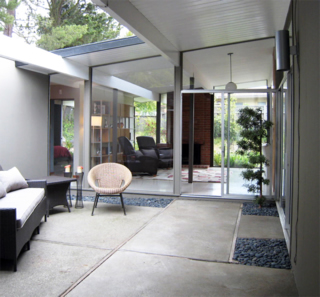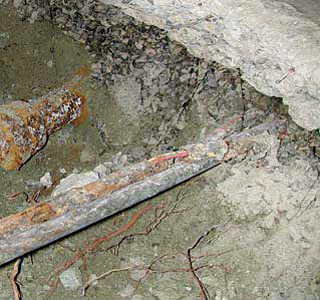Power Up - Page 2
 |
|
|
200-amp standard
Because of the great number of in-home appliances and electronics drawing electricity today, most homes now need at least a 200-amp panel, which will supply power for the range, refrigerator, oven, clothes dryers, jetted tubs, and air conditioners, as well as provide room for future upgrades. The appliances in your home and the amount of electricity they demand will dictate the size of electrical panel needed.
"As you know, Eichler homes were built between 1950 and 1974," says Sean Smith, owner of Smith Electric in Los Gatos, emphasizing their deficiencies. "These upgrades have to be done in order to accommodate today's technology driven modern families."
 |
|
|
Not having enough power isn't just an inconvenience, like when you're trying to blow-dry your hair and the lights keep going out; voltage fluctuations can damage your expensive electronics.
Homeowners in need of additional outlets and switches often ran new circuits from the main panel to the various rooms of the home. Unfortunately, the original electrical panels weren't large enough to properly accommodate much additional cable. Wires packed into too small of a box can overheat and cause electrical shorts or fire.
Code requirements
Circuit breakers should be sized for the wire size they serve, and not doing so can cause fire. For example, if a homeowner replaces a 15-amp fuse that fails with a 20-amp fuse, it can overheat and ignite.
New codes require that kitchen outlets be 20-amp circuits since these circuits will power appliances that require a lot of amps. New codes require that outlets and switches near sinks and other water-prone areas must be protected by a ground fault circuit interrupter (GFCI). A GFCI breaks the circuit when it senses water is present. This safety device can help prevent electric shock and even death.
 |
|
|
Not for the do-it-yourselfer
Upgrading electrical is a big job and one best left to the professionals. While many homeowners can manage to add a dimmer switch or swap out a simple light fixture, electrical work is generally not for the do-it-yourselfer.
Licensed electrical contractors know what to look for, and how to remedy problems in the least amount of time, and with the least amount structural damage.
Also, upgrading electrical systems requires permits, which electricians apply for routinely, with the work signed off by a building inspector from your municipality. "You have to go through permitting because each city has their own set of rules and codes," Needham says.
For such projects, not only are you dealing with electrical voltage, which can be dangerous, you're also having to do investigative work, sniffing out where and how lines are run, behind walls and under roofing materials, to troubleshoot problems.




